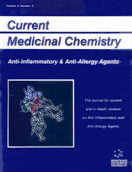Abstract
Proteoglycans (PG) consist of a core protein and an associated glycosaminoglycan (GAG) chain and reside on the cell surface and in the extracellular matrix. The different GAG chains of PG, heparan sulfate / heparin (HS), dermatan / chondroitin sulfate, keratan sulfate and of hyaluronic acid, which is not associated with a core protein, are synthesized as polymers of repeating disaccharide units. However, the structures of GAG chains are highly diverse. For example, the post-polymerisation modification of heparan chains (a polymer of glucuronic acid β1-4 N-acetyl glucosamine) by the sulfation of specific residues and the epimerisation of glucuronate to iduronate generates HS, which has a potential sequence complexity greater than that of the human proteome. Although only a fraction of this chemical complexity is used, it provides the framework for GAG chains to interact with a vast repertoire of proteins, with a specificity that is as high as required. As a consequence of their multiple interactions, PG are intimately involved in the different stages of inflammation, from the recruitment of inflammatory cells to the release of mediators of inflammation by infiltrating leukocytes and the turnover of extracellular matrix. The overarching theme of PG in inflammation is the regulation of the inflammatory microenvironment, which must change continuously and dynamically during the progression of the inflammatory response as observed in various pathologies such as arthritis and asthma. These changes include the modulation of the activity of GAG-binding cytokines, growth factors, proteases and protease inhibitors. The interactions of these regulatory proteins with GAG provides much of the focus for GAG-based therapeutic targets.
Keywords: Proteoglycans, Glycosaminoglycan Chains, Cytokines, FGF receptor, Hyaluronic acid, Heparan sulfate, Interferon gamma, Keratan sulfate, Macrophage inflammatory protein, N-deacetylase / N-sulfotransferase, Tumor necrosis factor alpha
 7
7

